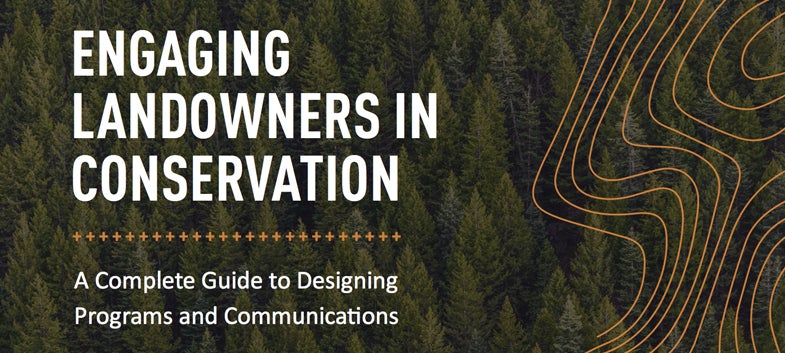About one-third of all forestland in the U.S. is owned by private individuals or families. But in most cases these owners haven’t developed long-term management plans, a fact that leaves huge amounts of forest vulnerable to degradation, fragmentation and development. And while there are many agencies and organizations working to engage these landowners they’re often stretched thin and are slow to adopt more effective engagement strategies.
For more than a decade the Yale-based Sustaining Family Forests Initiative (SFFI) has been working to make landowner-focused, action-oriented outreach the norm nationwide — including through its Tools for Engaging Landowners Effectively (TELE) program, which has created an online resources portal, held workshops across the U.S., and offers consultation.
This summer the TELE program introduced a one-stop resource for natural resources professionals that will enable them to better engage family landowners in conservation and responsible land stewardship.
The publication, “
Engaging Landowners in Conservation: A Complete Guide to Designing Programs and Communication,” is based on the TELE methodology, which applies social marketing principles to forestry and conservation programs, and typically yields a threefold improvement in rates of landowner activation. It also draws on the TELE team's decade of experience, during which they consulted on hundreds of landowner outreach projects.
The guide can be downloaded for free at
engaginglandowners.org/Guide.
Through the guide, they offer concrete guidance and real-life examples to help practitioners achieve the focus and scale needed to have a measurable and meaningful impact on the landscape.
“Working with natural resource professionals for more than 10 years, our team heard many of the same questions over and over,” said
Katherine Hollins, who helped produce the guide as program director of SFFI. “Most of these questions don’t have set answers that fit all situations, but we wanted to provide a framework for thinking about how to figure out the answers.”
According to the authors, the guide will help natural resource officers reach more landowners and encourage them to take appropriate stewardship actions even with limited time and resources. “It will teach you how to create motivation, thus reaching beyond landowners who already take the initiative on conservation actions,” they write. “Finally, it will help you change landowner behaviors at a scale that can bring positive changes to the landscape.”
The guide was developed with funding support from State & Private Forestry of the U.S. Forest Service, Department of Agriculture, in partnership with the Yale School of Forestry & Environmental Studies, the Center for Nonprofit Strategies, and the Aldo Leopold Foundation.
Please direct questions to
info@engaginglandowners.org or 203-432-7470
